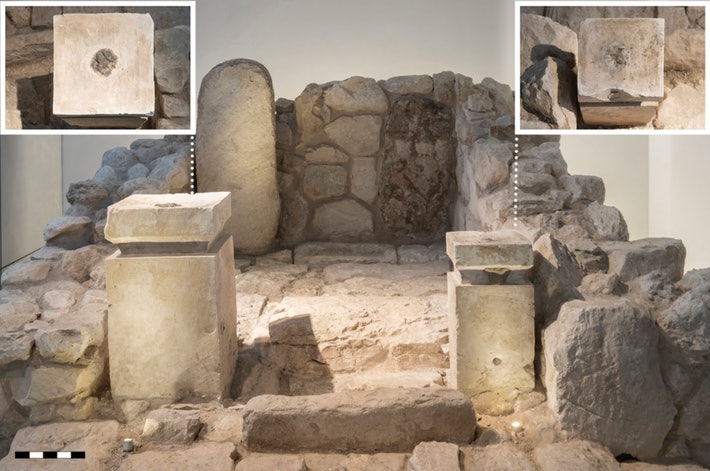It seems that priests in ancient Israel sometimes used marijuana in rituals. It’s the first evidence of the practice being done in the early history of Judaism.

Holy herb
A group of archeologists working on a 2,700-year-old altar in a desert shrine in Israel analyzed charred residues and found an interesting thing: cannabis.
The traces of weed were found on one of the altars of the temple at Tel Arad in the Negev desert in Israel. The substance was probably burned on purpose to get worshippers high on the psychoactive compounds, the researchers found.
Presumably, the goal was to induce or empower a religious ritual.
In fact, the archeologists strongly suspect that cannabis played a role in the rituals done at the Temple in Jerusalem. This is because the shrine at Arad was part of a fortress that kept safe one of the frontiers of the Kingdom of Judah at the same time the Babylonians conquered Jerusalem.
“We know from all around the Ancient Near East and around the world that many cultures used hallucinogenic materials and ingredients in order to get into some kind of religious ecstasy,” said lead author Eran Arie told CNN. “We never thought about Judah taking part in these cultic practices.”
Inside Arad, the researchers found in the past a massebah – a worked standing stone associated with ancient Levantine cultic activities and likely represented the presence of the deity in the shrine. On the steps leading to it, there were two altars that had been buried, which helped preserve the remains of burnt offerings.
The organic remains in the altars had already been analyzed in 1960 and the results were inconclusive, but the experts had assumed the altars were used to burn some type of incense.
Now, Arie and a group of archeologists applied more modern techniques and found that most of the substance in case was frankincense.
This was the first-time frankincense was identified in the Levant (the geographical area in the Eastern Mediterranean region of Western Asia that also hosts Israel). But that wasn’t the only surprise. On the smaller altar, 40 centimeters high, the team found rests of tetrahydrocannabinol (THC), cannabidiol (CBD) and cannabinol (CBN) — two substances that are found in cannabis.
The analysis of the chemicals in the residue showed that the frankincense and cannabis were mixed in with animal fat and dung. The researchers believe that the fat could have helped to achieve the needed temperature for the frankincense to release its aroma. Meanwhile, the dung probably helped to burn the cannabis at a lower temperature to so activate its psychoactive compounds.
There’s no evidence that the marijuana was grown in the Levant during the Iron Age, according to the researchers, which suggests it had to be imported and implied larger costs. That’s also the case of the frankincense, collected from Boswellia trees and brought in from Southern Arabia.
“If they just wanted to make the temple smell nice, they could have burned some sage, which grows in the area of Jerusalem,” Arie said. “Importing cannabis and frankincense was a big investment that could not be made by some isolated group of nomads, it required backing from a powerful state entity.”
The use of cannabis in Israel is now illegal but it has been decriminalized partially. Home use and possession of up to 15 grams and below are not enforced by the authorities. Its use is also allowed for some specified medical purposes. Israel is now seen as a global leader in medical cannabis research and innovation.
The study was published in the Journal of the Institute of Archaeology of Tel Aviv University


